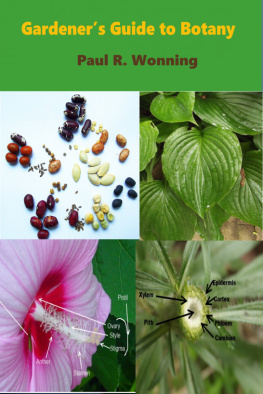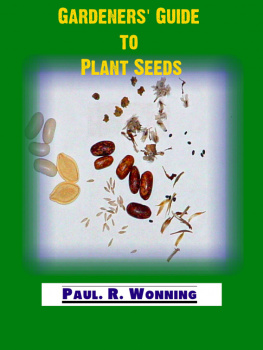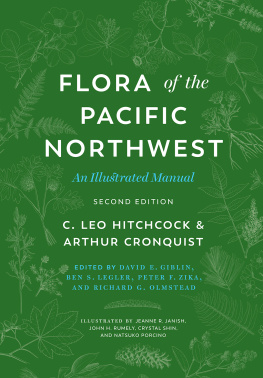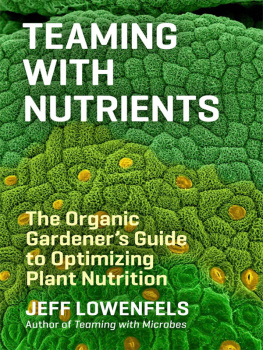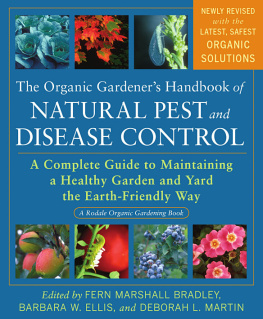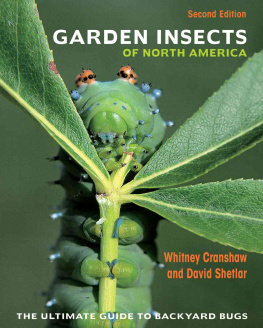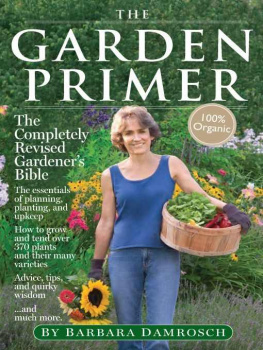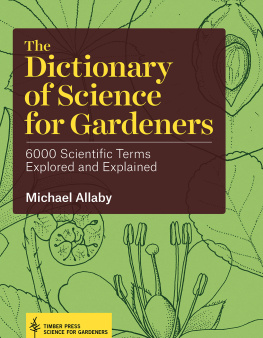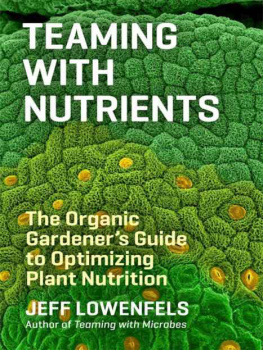Praise and acclaim for Botany for Gardeners
Here is a magical little book for anyone wanting to know the why of gardenings many miracles.
Newsday
With its many color photographs, its discursive style, and its comprehensive glossary, Botany for Gardeners is a joy to read.
HortIdeas
A book such as this should be in every workshop, potting shed and mess room.
American Association of Botanical Gardens and Arboreta Newsletter
If you ever wanted to know why a plant reacts the way it does, this book is for you.
American Herb Association Quarterly Newsletter
Not just for gardeners, this book is highly recommended for all who are curious about the world around them.
Chicago Botanic Garden
Those who enjoy and are fascinated by plants and gardening, would enjoy them even more with the help of this book.
Northeastern Naturalist
Gives the basics in a laypersons language, and its not the size of a typical scientific tome, which in my book recommends it highly.
The Oregonian
Capons writing is interesting and engaging. He makes botany sound as interesting as it really is. To those who think that plants dont do anything, he says: Throughout every moment of a plants life, activities of inconceivable complexity take place beneath a deceptive facade of effortlessness and tranquility.
Academic Library Book Review
This is a reference that should be on the desk of everyone interested in plants.
Pappus

BOTANY FOR GARDENERS

Third Edition
WRITTEN AND ILLUSTRATED BY
BRIAN CAPON

Copyright 2010 by Brian Capon
First edition 1990 by Timber Press
Revised edition 2005 by Brian Capon
Photographs 2010 by Brian Capon unless otherwise indicated
Drawings 2010 by Brian Capon
All rights reserved
Published in 2010 by Timber Press, Inc.
The Haseltine Building
133 S.W. Second Avenue, Suite 450
Portland, Oregon 97204-3527
www.timberpress.com
2 The Quadrant
135 Salusbury Road
London NW6 6RJ
www.timberpress.co.uk
ISBN-13: 978-1-60469-095-8
Printed in China
Library of Congress Cataloging-in-Publication Data Capon, Brian.
Botany for gardeners / written and illustrated by Brian Capon. 3rd ed.
p. cm.
Includes index.
ISBN 978-1-60469-095-8
1. Botany. 2. Gardening. I. Title.
QK50.C36 2010
580dc22
2009051602
A catalog record for this book is also available from the British Library.
CONTENTS

My fathers garden. Victoria, British Columbia, Canada
PREFACE
With our feet firmly planted in the twenty-first century, we live in a world greatly changed from that in the middle of the 1980s when I started to plan the first edition of this book. New words have become commonplace in our vocabulary: Internet, global warming, cell phone, and digital camera. And a blackberry is no longer just a luscious fruit. Keeping up with changing technology is becoming more challenging with each passing year. To a person of my generation, at least, finding a place where things are not so hectic, where time seems to take a more leisurely pace, is even more important than it was a quarter of a century ago. That place is my garden.
In my plants I find a connection with the pasthappy memories of the days when I planted themand satisfaction knowing that some will be there for years to come as a legacy, perhaps beyond my lifetime. While tending to their needs, I find comfort in their unchanging, placid ways, unbothered by the fever of human activity. And when working on them with trowels and garden clippers, rather than react as would an attacked animal, the plants miraculously grow even better, rewarding me with more perfect selves. A relationship of this kind is hard to find in any other part of our daily lives.
All gardeners can probably trace their love affair with plants to an earlier experience in their lives. Mine was growing up in a home where my father maintained a spectacular flower garden with beds of perennials arranged in the traditional English style and blooming periods overlapping throughout the summer to create an ever-changing kaleidoscope of color. From this I directed my education and career to studying and teaching botany. When the time came to retire, I looked for a way to continue spreading the good word about plants to a new audience, the readers of a botany book specifically written for gardeners and others who have not had my own privileged scientific background but, nevertheless, are hungry to learn more intimate details about plants other than the practical aspects of growing them.
Among the courses I taught, one of the most satisfying was a general botany for the non-science majors, students who had to take a science course as part of their prescribed curriculum. Most anticipated a tedious litany of dull facts, but by the end of the course so many came to me excited that learning about plants had been a revelation, awakening their awareness of the world around them. It was there that Botany for Gardeners was born in 1990.
Botany is a dynamic science, with new information about plants constantly being added by research scientists. Most of the latest discoveries are above the comprehension of gardeners and others without a scientific background, for example, studies of key proteins or other substances and their involvement in complex biochemical systems that regulate growth. But all modern research has, as its foundation, the basic, core principles of plant science that are outlined in laypeoples language in this book. Equipped with this information, you will be ready to expand your knowledge of plants (and it can be limitless), delve at great depth into any of the many subdivisions of botany, and, perhaps, make discoveries of your own.
For this third edition, new concepts not covered in previous editions are introduced in three short essays related to the topic of plants as human food sources. The dimensions of the text have also been expanded with interesting facts about plants presented in sidebars, and several new photographs have been added, including startling extreme close-up images as seen with scanning electron microscopes.
We hope this twentieth anniversary edition of a gardeners favorite, in its newly designed form, will give you new insights into the lives of some of the most wonderful living things that share this planet with us.
BRIAN CAPON, 2010
INTRODUCTION
Earth has been called the green planet, a world clothed in a mantle of vegetation that sustains all other forms of life on this tiny spot in the universe. From simple beginnings, plants evolved first among Earths living things and thereby established a fundamental principle of nature: Plants, in one form or another, can exist forever without animals, but animals cannot exist without plants.
Plants purify the air by exchanging the oxygen we breathe with carbon dioxide, which is poisonous in too high a concentration. Plants convert the energy of sunlight into foods that sustain all animals and, from the soil, draw minerals such as nitrogen, potassium, calcium, and iron that are essential for our well-being. For creatures large and small, plants provide shade from the sun, refuge from predators, and protection from the ever-changing elements. Since the first cells came into being millions of years ago, plants have been the connecting links in an unbroken chain of life. It is they that have made the biosphere, the part of Earths crust where life exists, a place that humans can comfortably inhabit. The range of uses we make of plants is as broad as our ingenuity permits. We have exploited them for fibers to make cloth, drugs to cure a multitude of ailments, and wood to construct houses, furniture, and ships. From them we have extracted raw materials to manufacture innumerable goods, including paper. Without that latter commodity, our detailed history would not have been recorded and so remembered, nor could knowledge have been so easily disseminated. And culture, the possession of which makes humans out of animals, would never have developed beyond the basic skills and habits of primitive peoples had we not had paper on which to write music, poetry, and prose.
Next page

